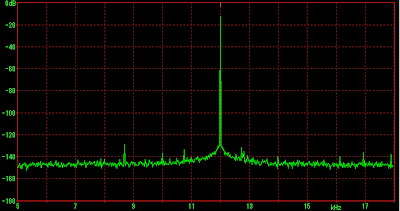I have a few old TosLink cables hanging around of varying qualities and build. Let's have a peek in the closet:
Cable A:
This is the cheapest cable I have. I believe it was a freebie from one of my old DVD players. The only marking is along the side of the cable it says "VITOnet". Length 6' and relatively thin.
Cable B:
A small step up from the freebie. Branded "Thunder Cable" TosLink I got as a package with some other home theater cables I bought maybe 10 years ago from Costco locally. Again 6' and thickness of the cable about the same as the VITOnet, so it feels quite fragile in the hand.
Cable C:
Another step up in construction and price. A 6' Acoustic Research Pro TosLink cable. Nice gold plated connector now with good strain relief and quite a thick caliber. Maybe about $20 when I bought it. Has served me well for years between the DVD player and a Denon receiver.
Cable D:
Up to this point, all the cables have been plastic optical fiber. This next one is of glass cable construction. Can be purchased off Amazon here for ~$20. Construction is also very good with nice metal connectors, gold plated terminals, and good cable thickness. According to the "specs", the cable supposedly has "280 individual stands of glass". Again, the length is the same at 6'. Note that it's not necessarily a given that glass is superior to plastic; for LED light sources, it has been said that plastic cables might even be better.
Cable E:
The "worst" Dr. Frankenstein cable I could construct from what I had was with the use of a $3 TosLink coupler off eBay. This adds an extra transmission interface and of course extends the length of the cable which could worsen signal integrity. I coupled the 2 cheapest TosLink cables I described above - the VITOnet (Cable A) and Thunder Cable (Cable B) - for a total length of 12'. I tested the cable looking just like this with it coiled up.
Analogue Tests (RightMark, 24/96):
Standard methodology:
Win8 laptop --> 6' shielded USB cable --> CM6631A asynchronous USB-to-SPDIF --> *test TosLink cable* --> AUNE X1 DAC TosLink input --> shielded RCA --> E-MU 0404USB --> Win8 laptop
Okay folks, here's the summary...
I think as you can see from this table, the test results are essentially exactly the same. 'Cable E' was measured about 2 weeks after all the others (I was waiting for the coupler to arrive from Asia); notice how reproducible the test results are.
Frequency Response:
Noise Level:
THD:
Stereo Crosstalk:
No difference.
Jitter Analysis (Dunn J-Test Signal 16-bit & 24-bit):
Cable A (6' VITOnet):
Cable B (6' Thunder Cable):
Cable C (6' Acoustic Research):
Cable D (6' Glass):
Cable E (12' Coupled VITOnet + Thunder Cable):
For the 12' Cable E, I even started waving the cable around at the coupler joint to see what would happen to the jitter spectrum... Nothing of significance!
Notice that the CM6631A USB-to-SPDIF converter has quite low jitter overall despite this being TosLink - few nasty sidebands and little spectral spreading of the primary signal (usually in my other measurements TosLink not as good as the coaxial interface).
Conclusion:
TosLink cables measure the same based on these results. Inexpensive 6' plastic, better quality plastic, glass, or a longer stretch of 2x6' cable with a coupler did not show any measurable difference in the analogue output from the AUNE X1 DAC used to test. Likewise, jitter analysis with the Dunn J-Test in both 16 and 24-bit versions did not demonstrate any appreciable difference between the cables. As far as I can tell, jitter does NOT appear to be affected by the TosLink cable quality based on these tests.
Subjective listening to the 12' coupled Cable E likewise did not show any musical anomaly - was able to enjoy Jorma Kaukonen's Blue Country Heart thoroughly through the AKG Q701's :-).
I think this concludes my survey of digital cables - at least for now...




































0 comments:
Post a Comment